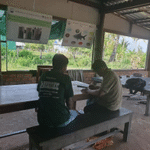An In-Depth Interview (IDI) or KII (Key Informant Interview) is a qualitative research method that involves a one-on-one conversation between a trained interviewer and a respondent to explore their perspectives, experiences, or motivations in detail. It is particularly useful when you want to dive deep into individual viewpoints without the influence of group dynamics.
🔍 Key Features of In-Depth Interviews
- One-on-One Interaction
Conducted privately, allowing for a deeper and more personal exploration of topics. - Semi-Structured or Unstructured
Guided by a flexible interview guide, but allows for follow-up questions and probing. - Open-Ended Questions
Encourages the participant to talk freely, offering detailed, nuanced responses. - Confidential and Safe Environment
Builds trust, especially for sensitive or personal topics. - Duration
Usually lasts 30 to 90 minutes, depending on the complexity of the topic
🛠️ Components of an In-Depth Interview
| Component | Description |
| Interviewer | Skilled at building rapport, listening actively, and probing deeply. |
| Interview Guide | A flexible framework with open-ended questions aligned with research goals. |
| Respondent | Carefully selected based on relevance to the study (e.g., experience, role). |
| Recording Tools | Audio or video recorders, or note-taking for accurate data collection. |
| Setting | Quiet, comfortable location to encourage openness and minimize distractions. |
✅ Advantages
Deep, rich insights into personal experiences and motivations.
Flexible and adaptive—interviewer can adjust the flow based on responses.
Ideal for sensitive or complex topics (e.g., trauma, health, personal beliefs).
Builds trust and rapport, often leading to more honest responses.
🧪 Examples of When to Use In-Depth Interviews
- Exploring personal experiences with healthcare or trauma.
- Understanding decision-making processes (e.g., why someone changed careers).
- Evaluating experiences with a service or program.
- Investigating attitudes toward controversial or sensitive issues.
📊 After the Interview: Analysis Process
- Transcription of the audio/video recording.
- Coding the data for themes, concepts, or patterns.
- Thematic or narrative analysis to draw insights.
- Triangulation with other data sources (optional) to validate findings.
- Reporting insights with direct quotes and contextual interpretation.


